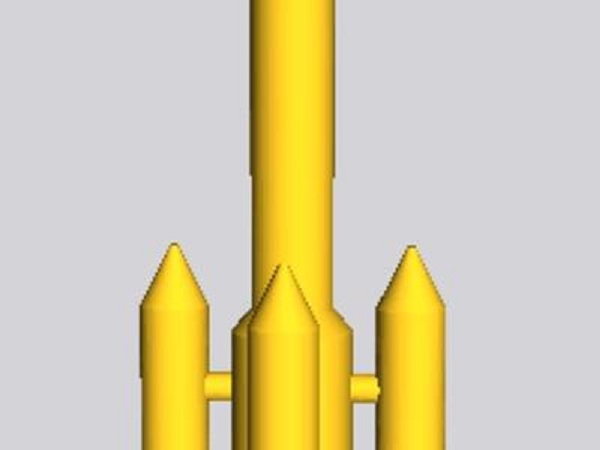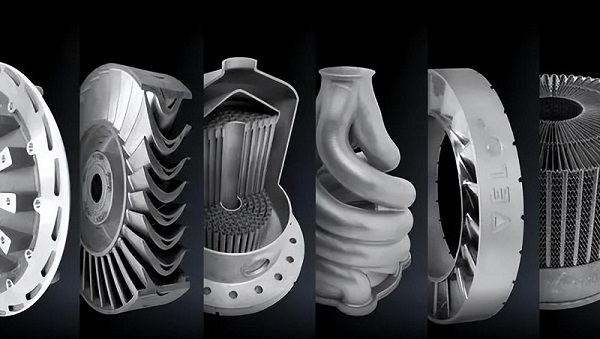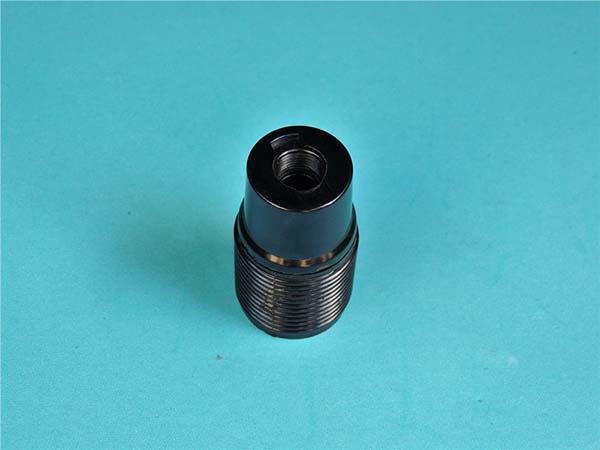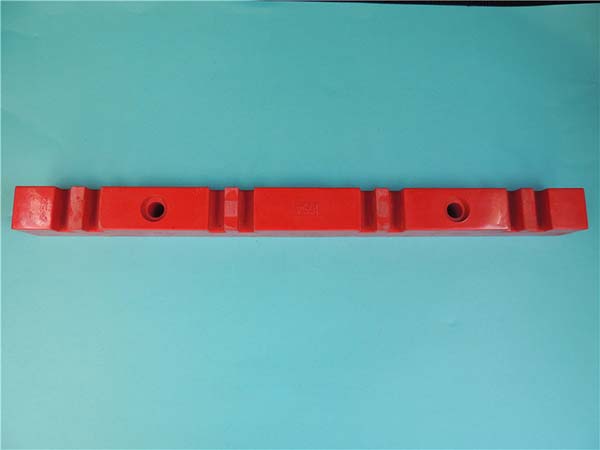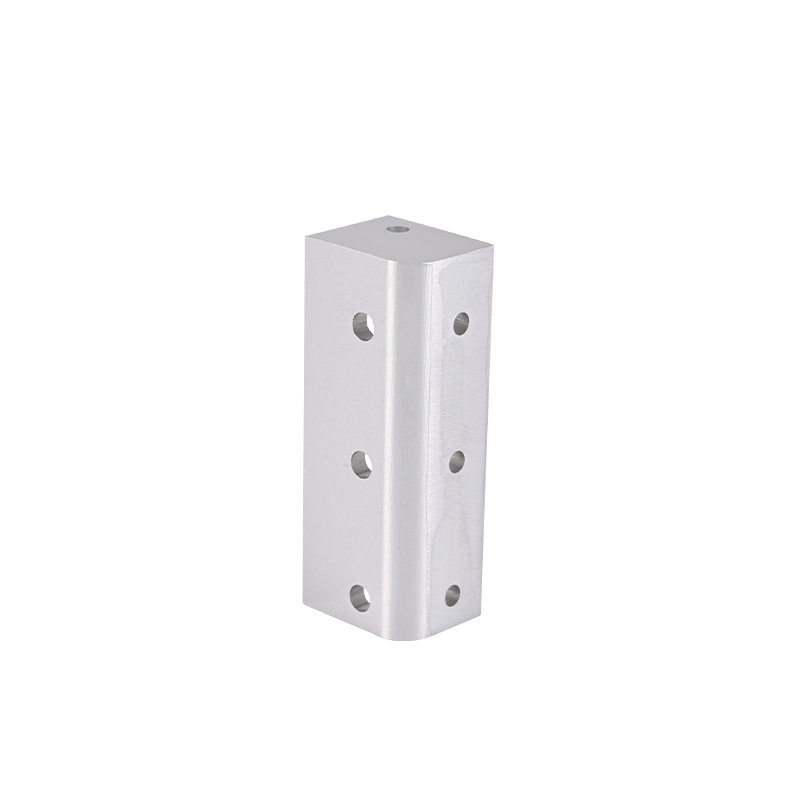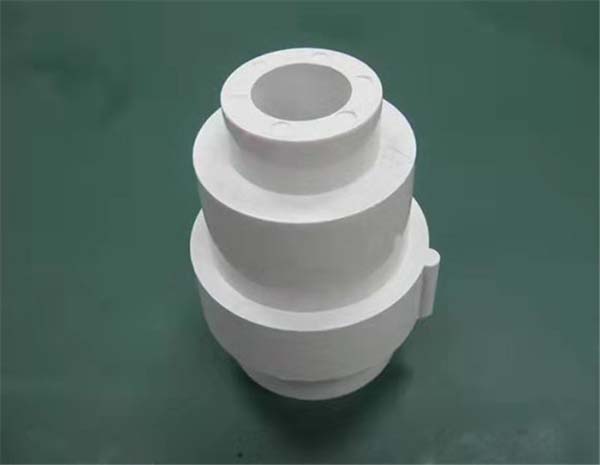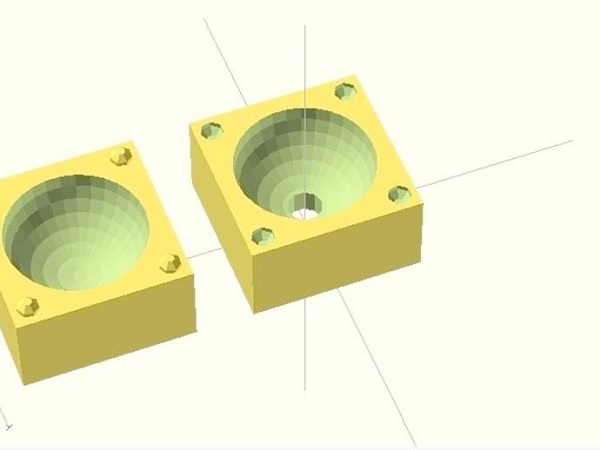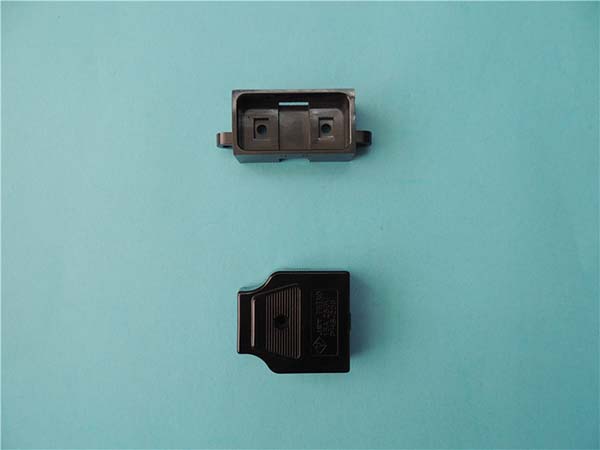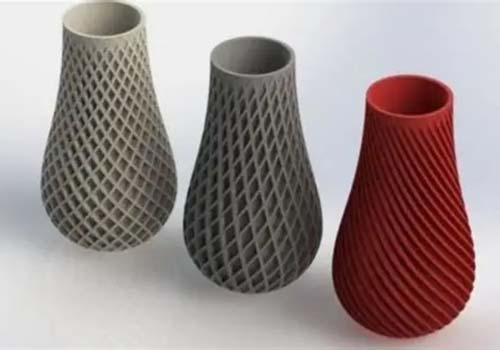Yigu: Laser additive manufacturing has revolutionized manufacturing, but it’s not without challenges. How do you select the right laser source for your project? Which materials work best with specific laser processes? What equipment is essential, and how can post - processing be optimized? This guide addresses these pain points, offering a detailed look at laser additive manufacturing.
1. Laser Technology
Types of Laser Sources
The choice of laser source directly impacts the quality and efficiency of laser additive manufacturing. Fiber lasers are widely used due to their high efficiency, excellent beam quality, and reliability. They operate at wavelengths around 1064nm, making them suitable for processing most metals. For example, in the automotive industry, fiber lasers are often used in laser metal deposition for repairing engine parts, as they can deliver consistent power and precision. CO₂ lasers emit at a wavelength of 10.6μm, which is absorbed well by non - metallic materials like plastics and ceramics. However, they are less effective for metals. Nd:YAG lasers are solid - state lasers that can be pulsed or operated continuously. They are used in applications such as laser cladding of tools and dies, where precise control of the laser energy is crucial.
Laser Power, Wavelength, and Beam Quality
Laser power determines the energy input into the material. Higher power is needed for thicker materials or faster processing speeds. For instance, when building large aerospace components using laser powder bed fusion, a laser power of 500W or more may be required to ensure proper melting of the metal powder. Laser wavelength affects material absorption. Metals typically absorb shorter wavelengths better, which is why fiber lasers (1064nm) are preferred for metal processing. Laser beam quality is measured by the beam parameter product (BPP). A lower BPP indicates a more focused beam, enabling finer details and better surface finishes. In medical implant manufacturing, where precision is paramount, a laser with high beam quality is essential to create intricate features.
Laser Focusing and Scanning Systems
Laser focusing is critical to achieving the desired spot size on the material. A smaller spot size allows for higher resolution and more precise melting, while a larger spot size is better for covering larger areas quickly. Laser scanning systems control the movement of the laser beam across the build area. Galvanometer - based scanners are commonly used for their high speed and accuracy, making them suitable for processes like selective laser melting where rapid layer deposition is needed. These systems can achieve scanning speeds of up to several meters per second, significantly reducing build times.
Pulsed Lasers
Pulsed lasers deliver energy in short bursts, which is beneficial for reducing heat - affected zones (HAZ) in the material. This is important for heat - sensitive materials or when processing thin sections. For example, in the production of dental restorations, pulsed lasers are used to minimize damage to the surrounding material, ensuring a high - quality final product. The pulse duration and frequency can be adjusted to control the energy input and the rate of material melting.
2. Materials
Metals and Alloys
Metals and alloys are the most commonly used materials in laser additive manufacturing. Titanium and its alloys are highly valued in aerospace and medical applications due to their high strength - to - weight ratio and biocompatibility. Laser additive manufacturing of titanium components can achieve near - net shapes, reducing material waste by up to 70% compared to traditional machining. Stainless steel is another popular choice, known for its corrosion resistance and strength. It is used in a wide range of applications, from industrial tooling to consumer products.
Aluminum, Nickel - based Superalloys, and Copper
Aluminum alloys are lightweight and have good thermal conductivity, making them ideal for automotive and aerospace parts. Laser additive manufacturing of aluminum components requires careful control of process parameters to avoid porosity, which can weaken the part. Nickel - based superalloys can withstand high temperatures and are used in gas turbine engines. These alloys have high melting points, so a high - power laser is needed for processing. Copper has excellent electrical and thermal conductivity but is challenging to process with lasers due to its high reflectivity. However, with the right laser wavelength and power, copper parts can be successfully 3D - printed for applications in electronics and heat exchangers.
Metal Powders and Composite Materials
Metal powders used in laser additive manufacturing must have consistent particle size and shape to ensure uniform melting and layer bonding. Spherical powders flow better and result in more consistent powder beds, leading to higher quality parts. Composite materials, such as metal - matrix composites (MMCs), combine metals with ceramics or other materials to enhance properties like strength or wear resistance. For example, aluminum matrix composites reinforced with silicon carbide particles are used in automotive parts to improve stiffness and reduce weight.
Ceramic - metal Composites
Ceramic - metal composites offer the best of both worlds: the high temperature resistance of ceramics and the toughness of metals. These materials are used in applications like cutting tools and high - temperature engine components. Laser additive manufacturing allows for the precise placement of ceramic particles within the metal matrix, creating tailored composites with specific properties.
3. Printing Processes
Selective Laser Melting (SLM) and Laser Powder Bed Fusion (LPBF)
Selective laser melting (SLM) and laser powder bed fusion (LPBF) are similar processes where a laser selectively melts metal powder layer by layer in a powder bed. SLM fully melts the powder, resulting in dense parts with mechanical properties comparable to wrought metals. LPBF, on the other hand, may partially melt the powder, leaving some porosity, which can be beneficial for certain applications like filters. Both processes are widely used in the aerospace industry to produce complex components with internal channels, such as fuel injectors.
Laser Metal Deposition (LMD) and Directed Energy Deposition (DED)
Laser metal deposition (LMD) and directed energy deposition (DED) involve feeding metal powder or wire into a molten pool created by a laser. These processes are suitable for building large parts, repairing damaged components, or adding features to existing parts. For example, LMD can be used to repair worn turbine blades, restoring their functionality at a fraction of the cost of replacing them. DED offers high deposition rates, making it ideal for rapid prototyping and large - scale manufacturing.
Laser Cladding and Layer - by - layer Manufacturing
Laser cladding is used to apply a protective or functional coating to a substrate. It can enhance the wear, corrosion, or heat resistance of parts. For instance, laser cladding with a nickel - based alloy can extend the life of industrial tools. Like other additive manufacturing processes, laser cladding builds up material layer - by - layer, ensuring a strong bond between the coating and the substrate.
Process Parameters and In - process Monitoring
Process parameters such as laser power, scanning speed, hatch spacing, and layer thickness have a significant impact on part quality. For example, increasing the scanning speed can reduce build time but may lead to insufficient melting if not balanced with laser power. In - process monitoring using sensors and cameras allows for real - time tracking of the melt pool, powder bed, and layer quality. This enables adjustments to be made during the build process, reducing the risk of defects. Real - time feedback systems can automatically adjust process parameters to maintain optimal conditions, improving consistency and reducing waste.
4. Equipment and Systems
Laser Additive Manufacturing Machines
Laser additive manufacturing machines come in various sizes and configurations. Desktop systems are suitable for small - scale prototyping, while industrial - grade machines can handle large parts and high - volume production. For example, some industrial LPBF machines have build volumes of over 500mm × 500mm × 500mm, allowing for the production of large aerospace components. These machines often feature multiple lasers to increase build speed.
Powder Delivery and Powder Bed Systems
Powder delivery systems in LMD and DED machines must accurately feed metal powder into the laser melt pool. Gravity - fed or auger - based systems are commonly used, with precise control over powder flow rates. Powder bed systems in LPBF and SLM machines spread a thin layer of powder over the build platform before each laser pass. A recoater blade or roller ensures a uniform layer thickness, which is essential for consistent part quality. The powder bed is typically maintained in an inert gas chamber (filled with argon or nitrogen) to prevent oxidation of the molten metal.
Laser Nozzles and Inert Gas Chambers
Laser nozzles in DED and LMD systems direct the laser beam and powder flow to the work piece. The design of the nozzle affects powder catchment efficiency and the shape of the melt pool. Inert gas chambers are crucial for processing reactive metals like titanium and aluminum, as they prevent the formation of oxides that can weaken the part. The gas flow rate and chamber pressure are carefully controlled to maintain a clean, oxygen - free environment.
Post - processing Equipment and Safety Systems
Post - processing equipment includes heat treatment furnaces, machining centers, and polishing tools. Heat treatment is often used to relieve residual stresses in laser - printed parts, improving their mechanical properties. Safety systems in laser additive manufacturing machines include interlocks, laser shields, and fume extraction systems to protect operators from laser radiation and harmful fumes. Regular equipment maintenance, such as cleaning lenses and calibrating lasers, is essential to ensure consistent performance and prolong the life of the machine.
5. Applications
Aerospace Components and Automotive Parts
The aerospace industry is a major user of laser additive manufacturing, producing components like turbine blades, fuel nozzles, and structural parts. These components are often lightweight and complex, with laser additive manufacturing enabling designs that are impossible with traditional methods. For example, GE Aviation uses laser powder bed fusion to produce fuel nozzles for jet engines, reducing the number of parts from 20 to 1 and improving fuel efficiency. In the automotive industry, laser additive manufacturing is used to create custom parts, prototypes, and tooling, reducing development times and costs.
Medical Implants and Dental Restorations
Medical implants such as hip and knee replacements are often custom - made using laser additive manufacturing. Titanium implants can be designed with porous structures that promote bone ingrowth, improving patient outcomes. Dental restorations like crowns and bridges are produced with high precision, ensuring a perfect fit. The ability to create patient - specific designs has revolutionized the medical and dental fields, offering better treatment options.
Industrial Tooling, Energy Components, and Customized Products
Industrial tooling such as molds and dies can be 3D - printed using laser additive manufacturing, with complex cooling channels that improve production efficiency. Energy components like heat exchangers and turbine parts benefit from the design freedom of laser additive manufacturing, allowing for better performance and energy efficiency. Customized products, from jewelry to consumer electronics, can be quickly produced to meet individual customer needs.
Repair and Maintenance, Lightweight Structures
Laser additive manufacturing is ideal for repair and maintenance of high - value components. Instead of replacing a worn part, it can be repaired by adding material to the damaged area, saving time and money. Lightweight structures are a key application, especially in aerospace and automotive, where reducing weight improves fuel efficiency. Laser - printed lattice structures and hollow designs achieve significant weight savings while maintaining strength.
6. Post - Processing
Heat Treatment and Machining
Heat treatment is often necessary after laser additive manufacturing to relieve residual stresses and improve mechanical properties. Processes like annealing and solution treatment can enhance the strength and ductility of metal parts. Machining may be required to achieve tight tolerances or a specific surface finish. CNC machining centers are commonly used to refine laser - printed parts, ensuring they meet design specifications.
Polishing, Surface Finishing, and Support Removal
Polishing improves the surface roughness of laser - printed parts, which is important for aesthetics and functionality. For medical implants, a smooth surface reduces the risk of infection. Surface finishing techniques like shot peening can increase fatigue resistance. Support removal is necessary for parts with overhangs. Supports can be removed manually, by machining, or using chemical dissolution, depending on the material and part geometry.
Infiltration, Post - processing Optimization, and Quality Control
Infiltration is used to fill pores in parts, improving their density and strength. For example, copper can be infiltrated into porous steel parts to enhance thermal conductivity. Post - processing optimization aims to streamline the post - processing steps, reducing time and costs. Quality control in post - processing includes inspections using non - destructive testing (NDT) methods like X - ray and ultrasonic testing to detect internal defects. Surface coating can be applied to improve corrosion resistance or wear properties.
Yigu Technology's Perspective
Yigu Technology, a custom plastic and metal parts manufacturer, embraces laser additive manufacturing for its ability to produce complex, high - quality parts. We select the right laser sources and materials for each project, optimizing process parameters to ensure consistency. Our focus on post - processing, from heat treatment to precision machining, ensures parts meet the strictest standards. We leverage this technology to offer clients innovative solutions in aerospace, medical, and industrial applications.
FAQ
- Which laser source is best for processing aluminum in laser additive manufacturing?
Fiber lasers are the best choice for aluminum processing due to their short wavelength (1064nm), which is well absorbed by aluminum, ensuring efficient melting and good part quality.
- How can I reduce residual stresses in laser - printed metal parts?
Heat treatment, such as annealing, is effective. Annealing at a temperature below the material's melting point relieves internal stresses. Controlling build parameters to minimize temperature gradients during printing also helps.
- What post - processing steps are essential for medical implants made via laser additive manufacturing?
Essential steps include heat treatment to relieve stresses, machining to achieve precise dimensions, polishing for a smooth surface, and NDT to ensure no internal defects. Sterilization is also required before use.
